NIL
College sports lurches forward, hoping to find a level playing field with fewer lawsuits
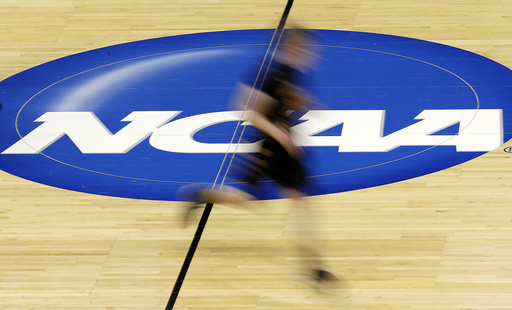
By EDDIE PELLS
MIRAMAR BEACH, Fla. (AP) — On the one hand, what this new version of cash-infused college sports needs are rules that everybody follows.
On the other, they need to be able to enforce those rules without getting sued into oblivion.
Enter the College Sports Commission, a newly created operation that will be in charge of counting the money, deciding what a “fair market” deal for players looks like and, if things go well, helping everyone in the system avoid trips to court whenever a decision comes down that someone doesn’t like.
With name, image, likeness payments taking over in college, this group will essentially become what the NCAA committee on infractions used to be – the college sports police, only with the promise of being faster, maybe fairer and maybe more transparent.
In a signal of what the CSC’s most serious mission might be, the schools from the four biggest conferences are being asked to sign a document pledging not to rely on state laws – some of which are more permissive of payments to players — to work around the rules the commission is making.
“We need to get out of this situation where something happens, and we run to our attorney general and file suit,” said Trev Alberts of Texas A&M, one of 10 athletic directors who are part of another group, the Settlement Implementation Committee, that is helping oversee the transition. “That chaos isn’t sustainable. You’re looking for a durable system that actually has some stability and ultimate fairness.”
In this new landsacpe, two different companies will be in charge of two kinds of number crunching.
The first, and presumably more straightforward, is data being compiled by LBi Software, which will track how much schools are spending on every athlete, up to the $20.5 million cap each is allowed to distribute in the first year of the new arrangement expected to begin July 1.
This sounds easy but comes with the assumption that universities – which, for decades, have sought to eke out every edge they can, rulebook or no – will provide accurate data.
“Over history, boosters have looked for ways to give their schools an advantage,” said Gabe Feldman, a sports law professor at Tulane. “I think that will continue even with the settlement. It’s anyone’s guess as to how that manifests, and what the new competitive landscape looks like.”
Adding some level of transparency to the process, along with the CSC’s ability to deliver sanctions if it identifies cheaters, will be key to the new venture’s success.
“There’s legal risk that prohibits you from doing that,” Alberts said. “But we want to start as transparent as we can be, because we think it engenders trust.”
Good intentions aside, Alberts concedes, “I don’t think it’s illogical to think that, at first, it’s probably going to be a little wonky.”
Some of the wonkiest bookkeeping figures to come from the second category of number crunching, and that involves third-party NIL deals. The CSC hired Deloitte to run a so-called clearinghouse called “NIL Go,” which will be in charge of evaluating third-party deals worth $600 or more.
Because these deals aren’t allowed to pay players simply for playing – that’s still technically forbidden in college sports — but instead for some service they provide (an endorsement, a social media shoutout and so forth), every deal needs to be evaluated to show it is worth a fair price for what the player is doing.
In a sobering revelation, Deloitte shared with sports leaders earlier this month that around 70% of third-party deals given to players since NIL became allowable in 2021 would have been denied by the new clearinghouse.
All these valuations, of course, are subject to interpretation. It’s much easier to set the price of a stock, or a bicycle, than the value of an athlete’s endorsement deal. This is where things figure to get dicey. Though the committee has an appeals process, then an arbitration process, ultimately, some of these cases are destined to be challenged in court.
“You’re just waiting to see, what is a ‘valid business purpose’ (for an NIL deal), and what are the guidelines around that?” said Rob Lang, a business litigation partner at Thompson Coburn who deals with sports cases. “You can see all the lawyer fights coming out of that.”
In fact, elements of all this are ripe to be challenged in court, which might explain why the power conferences drafted the document pledging fealty to the new rules in the first place.
For instance, Feldman called a law recently enacted in Tennessee viewed by many as the most athlete-friendly statute in the country “the next step in the evolution” of state efforts to bar the NCAA from limiting NIL compensation for athletes with an eye on winning battles for recruits and retaining roster talent.
“What we’ve seen over the last few years is states trying to one-up each other to make their institutions more attractive places for people to go,” he said. “This is the next iteration of that. It may set up a showdown between the schools, the NCAA and the states.”
Greg Sankey, the commissioner of the Southeastern Conference, said a league spanning 12 states cannot operate well if all those states have different rules about how and when it is legal to pay players.
The SEC has been drafting legislation for states to pass to unify the rules across the conference. Ultimately, Sankey and a lot of other people would love to see a national law passed by Congress that does that for all states and all conferences.
That will take months, if not years, which is why the new committee drafted the document for the schools to sign.
“We are all defendant schools and conferences and you inherently agree to this,” Alberts said of the document. “I sat in the room with all of our football coaches, ‘Do you want to be governed?’ The answer is ‘yes.’”
___
AP college sports: https://apnews.com/hub/college-sports
NIL
Alabama Football Player Uses NIL Money to Give Tuscaloosa Kids a Brighter Christmas
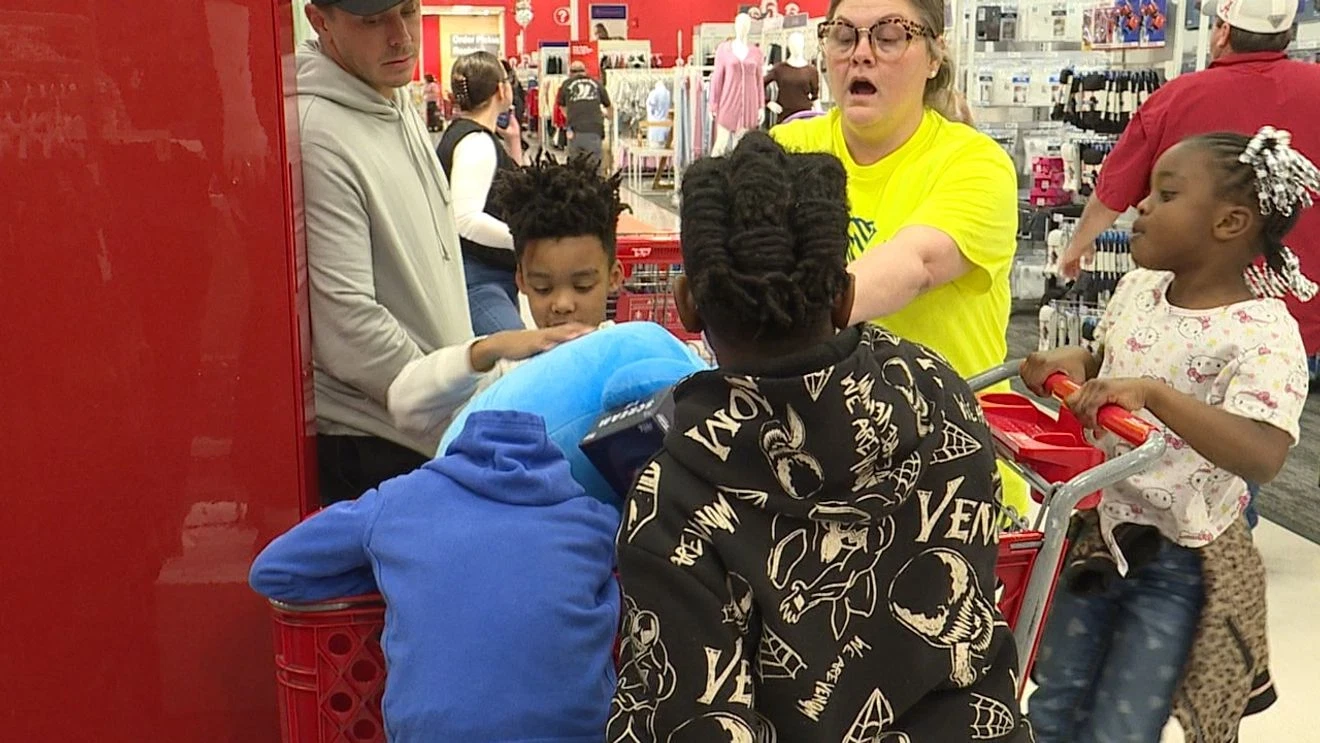
TUSCALOOSA, Ala. — On Monday, December 22, Brailsford — the starting center for the Alabama Crimson Tide — hosted a Holiday Shopping event at the Target on 13th Avenue East in Tuscaloosa. Using his own NIL money, Brailsford treated ten children from underserved communities to a Christmas shopping spree, giving each child a gift card to shop for themselves.
“I really wanna make their day,” Brailsford said. “I mean, that’s what this is really about for me.”
The children moved eagerly through the aisles, selecting toys and gifts while checking items off their Christmas lists.
Brailsford said the event was funded entirely through his own NIL earnings.
The sophomore has already made an impact on the field this season, earning SEC Offensive Lineman of the Week honors multiple times. Off the field, he said giving back has always been important to him.
Adopted as a baby, Brailsford said he grew up with enough, even if his family did not have much.
“We didn’t necessarily have a lot, but we had enough,” he said. “Being able to give back to kids that don’t always have that opportunity at Christmas is something special to me.”
Brailsford is currently studying social work and said he hopes to work with children after school in the future.
“I really want to be able to get into that field and help kids in any way I can,” he said.
While he continues to gain recognition on the football field, Brailsford said moments like the holiday shopping event are just as meaningful.
“I feel like I’m good at helping people,” he said. “That’s something that fulfills me. It’s my purpose in a way.”
For the children involved, the shopping trip was more than just receiving gifts. It was an experience shared with a role model who hopes to continue giving back long after the holidays are over.
NIL
College Football Playoff team has ‘significant interest’ in 4,000-yard QB

Indiana’s rise from perennial Big Ten bottom feeders into national title contenders has been one of college football’s most compelling stories in 2025.
Under second-year head coach Curt Cignetti, the Hoosiers finished the regular season undefeated at 13-0, captured the program’s first Big Ten title since 1967, and earned the No. 1 seed in the College Football Playoff.
Quarterback Fernando Mendoza capped the breakthrough season by winning the school’s first-ever Heisman Trophy, throwing for 2,980 yards with 33 touchdown passes and a 71.5% completion rate that helped propel Indiana into national contention.
That success now intersects with a separate transfer-cycle storyline: North Texas quarterback Drew Mestemaker, the FBS passing leader (4,129 yards, 31 touchdowns, 70.2% completion rate), is likely to enter the transfer portal when the window opens in January.
On a December 19 episode of “College Football Insiders,” CBS Sports’ Chris Hummer connected the dots.
“He can be somebody you can build your program around for multiple years,” Hummer said. “I’ve heard the same about Indiana. I think they do have a significant interest in Drew Mestemaker, and I think he would be a really good fit for their system.”

Mestemaker is a former walk-on who emerged as the nation’s passing leader this season as a redshirt freshman, posting multiple 300-yard performances and a 608-yard outing in North Texas’ 54–20 win over Charlotte, a game that set single-game passing yardage records for both the school and the American Athletic Conference.
His breakout year earned him the Burlsworth Trophy, American Athletic Conference Offensive Player of the Year honors, and first-team All-American recognition.
There are clear reasons the fit is being discussed publicly.
Indiana has demonstrated a clear willingness to use transfers to accelerate competitiveness, most notably with Kurtis Rourke’s arrival as a graduate transfer in 2024, followed by Mendoza’s move from Cal.
Both quarterbacks produced elite statistical seasons that propelled the Hoosiers to winning campaigns.
If Mendoza ultimately declares for the 2026 NFL Draft, which is widely expected, Indiana would need either an internal successor or a portal option who can step in at Power-5 level speed.
Mestemaker’s profile checks several boxes: production, track record under a pro-style system, and remaining eligibility.
Read More at College Football HQ
- SEC program listed as highest-valued college football team with $1.4 billion valuation
- Major college football head coach denies receiving offer for Michigan job
- $5 million quarterback market predicted amid transfer portal frenzy
- ESPN silent after celebrity guest picker misses College GameDay
NIL
Adam Breneman Highlights Why College Football Will Fail Under Greg Sankey’s Leadership Amid Transfer Portal, NIL Issues
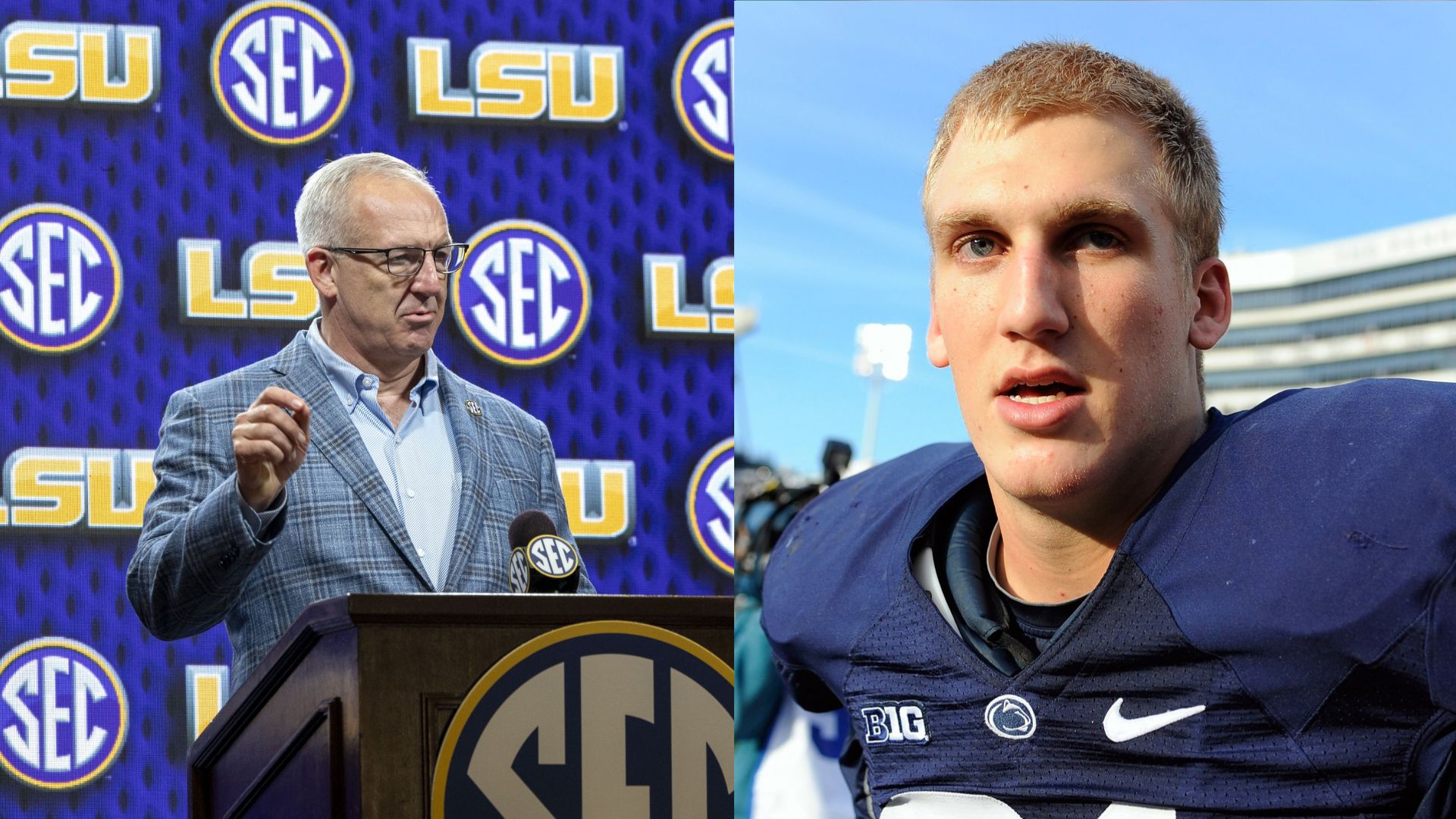
Former Penn State tight end Adam Breneman, on the Will Ventures podcast, revealed his true feelings on the current landscape of college football and the implications of the decisions made by some leaders in the game.
Breneman, on his podcast appearance, highlighted how no one’s actually in charge of college football, whilst also strongly advocating for a college football commissioner.
“No one’s actually in charge of college football. We need a college football commissioner”, Breneman stated on the podcast.
Despite college football not having a designated commissioner, SEC commissioner Greg Sankey is one of the most powerful college football figures and is often touted to be in charge of college football as a whole.
Breneman further revealed that Sankey is also in charge of other sports like golf, diving, lacrosse, and men’s & women’s basketball, stating that college football needs a commissioner who will make decisions for the betterment of college football, implying that it’s tough to do that while you have other things on your plate.
“Greg Sankey is also in charge of golf and swimming and diving and men’s basketball and women’s basketball and lacrosse has to make the best decisions for those sports as well. No one’s actually in charge of college football”, Breneman highlighted.
“We need a college football commissioner who actually is in charge of college football and can make decisions for college football because what’s best for college football is not what’s best for men’s basketball”, he further elaborated.
The former ASU tight end coach’s comments come on the backdrop of college football going through a turbulent period as far as player transfers, NIL issues, and the overall backlash the playoff committee is facing as far as the selection of the 2025 playoff teams is concerned.

Greg Sankey Pushes for Expansion to a 16-Team College Football Playoff
Sankey recently appeared on The Rich Eisen Show this December, emphasizing the need to adopt a 16-team playoff format, potentially moving away from the current 12-team format, while also keeping in mind other conferences and their playoff qualification, which was a point of contention amongst analysts and fans alike.
Meanwhile, the college football portal, which is set to officially open in January 2026, has already seen a record number of entries, with the likes of star QBs like DJ Lagway and Dylan Raiola entering, potentially fueled by NIL incentives.
Read More:
College Sports Network has you covered with the latest news, analysis, insights, and trending stories in college football, men’s college basketball, women’s college basketball, and college baseball!
NIL
Major college football program loses 15 players to transfer portal
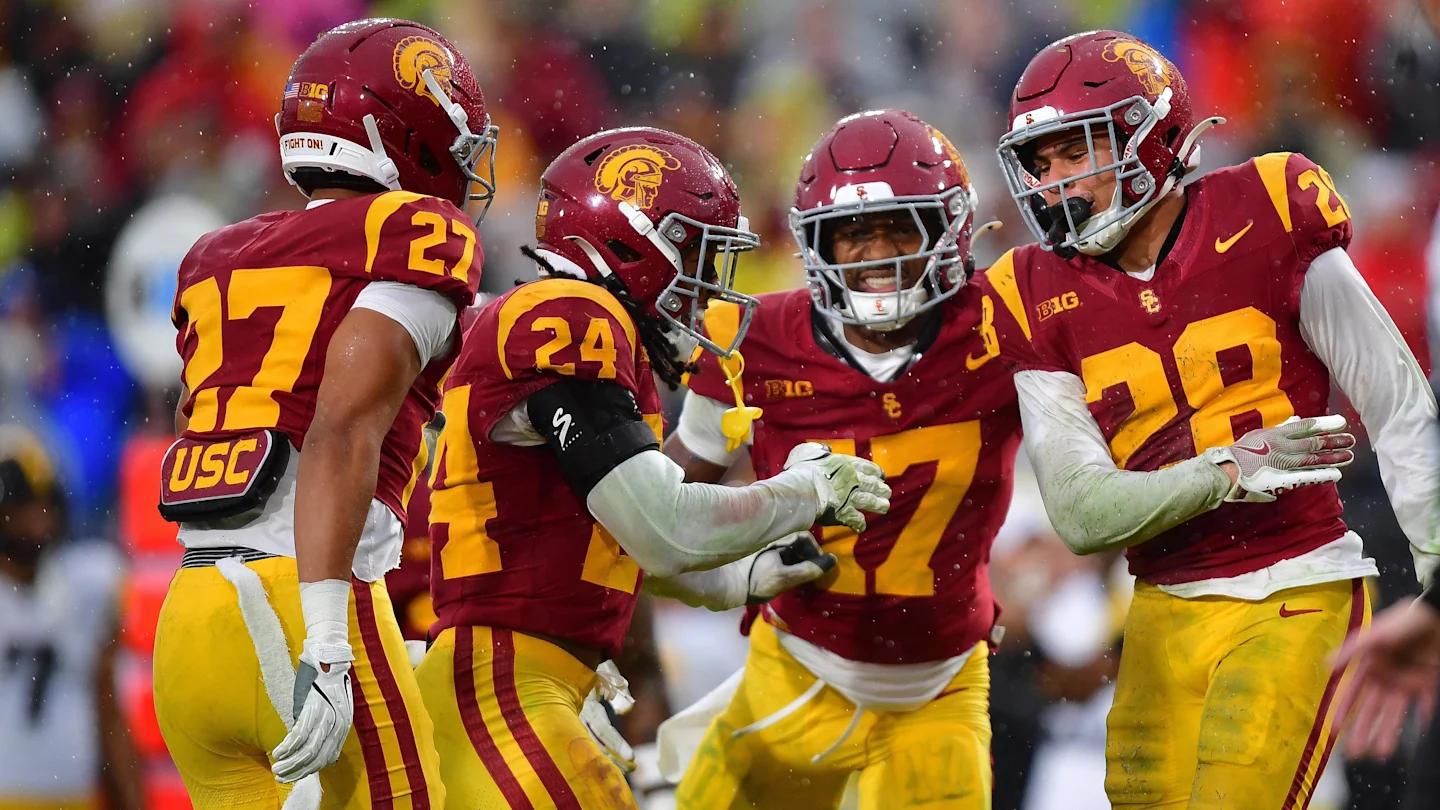
USC defensive tackle Devan Thompkins, a 6-5, 290-pound veteran who started 12 games in 2025, announced his intention to enter the NCAA transfer portal on December 17.
Thompkins finished the 2025 season with 31 combined tackles (18 solo), three sacks, two pass breakups, and a forced fumble; across three seasons at USC, he compiled 56 total tackles (32 solo), 4.5 sacks, and five pass breakups.
Those figures made him one of the more productive interior linemen on a unit that struggled at times but improved to finish ranked and bowl-eligible.
USC closed the 2025 regular season 9–3 (7–2 Big Ten) and will face TCU in the Valero Alamo Bowl on December 30, a season that left the program ranked inside the top 25 (No. 16) but short of College Football Playoff contention.
The Trojans’ record and bowl bid reflect progress under head coach Lincoln Riley while also exposing lingering gaps across the roster.
Those gaps have since been amplified, as Thompkins’ departure brings USC’s total number of players set to test the transfer market to 15.

The list of known departures is sizable and spread across position groups.
According to 247Sports, the 15 players who have announced portal entries include: WR DJ Jordan, RB Bryan Jackson, CB Braylon Conley, DE Gus Cordova, OL Makai Saina, S Steve Miller, LB Matai Tagoa‘i, DL Carlon Jones, S Anthony Beavers Jr., OL Micah Banuelos, LB Garrison Madden, RB Harry Dalton, WR Prince Strachan, TE Walker Lyons, and Thompkins.
That grouping hits starters across the trenches, secondary, and skill positions — areas that will require immediate replacements via the portal, incoming freshmen, and retained depth.
After a successful five-year run at Oklahoma from 2017 to 2021, Riley took over as USC’s head coach in November 2021 and has delivered steady results built on quarterback development, high-powered offenses, and aggressive recruiting, highlighted by USC securing the No. 1-ranked 2026 recruiting class.
The current exodus provides the latest test for Riley as USC works to build toward a stronger Big Ten finish in 2026.
Read More at College Football HQ
- College Football Playoff team has ‘significant interest’ in 4,000-yard QB
- College football quarterback enters transfer portal after 4,000-yard season
- No. 1 ranked transfer portal player predicted to join College Football Playoff team
- SEC program listed as highest-valued college football team with $1.4 billion valuation
NIL
Joey McGuire Compares Oregon to Texas Tech Amid Increased NIL Spending

Texas Tech Red Raiders coach Joey McGuire spoke to the media ahead of the Orange Bowl against the Oregon Ducks, and McGuire was quite complimentary of Oregon coach Dan Lanning and the Ducks program. Much has been made about Texas Tech’s increased spending in the name, image, and likeness (NIL) era of college football, and similarities between the Red Raiders and the Ducks have come up ahead of their College Football Playoff matchup.
Powered in part by Nike co-founder and philanthropist Phil Knight, Oregon’s rise in the college football world has been a unique one. On the other hand, Texas Tech’s NIL collective is led by billionaire booster Cody Campbell, whose investment into the Red Raiders program has helped the team climb up the ranks.
What Joey McGuire Said About Oregon and Texas Tech
McGuire was asked to compare Oregon’s rise to Texas Tech’s, and the Red Raiders coach gave a thoughtful answer:
“First, they’ve done a good job of hiring coaches, and Dan (Lanning) was a slam dunk. Second, you know, they made it cool to be an Oregon Duck,” McGuire said. “I mean, they’ve got every uniform known to man, and players love that. So I think we’re really fortunate with Adidas, our partnership with Adidas and Patrick Mahomes, that we’re doing the same thing. We’ve got some some great looks.”

“And then, they have a great booster in Phil Knight that really said, ‘Hey, we’re going to go win at the highest level, and there’s no excuses whenever it comes to finance.’ You know, you turn around, and I think that we’ve shown that we’re doing that, and I think we’re really comparable,” McGuire continued.
“We’ve got guys that have really stepped up and done a great job. I kind of call them the big five whenever you talk about Cody and John and Mike, Dusty, and Gary. I mean, those guys have, along with everybody else in Red Raider Nation, but those guys really led the charge. And so whenever you’re talking, we’re kind of comparable on and off the field in this team. They’ve just done it for a little bit longer and that’s what we’re trying to do,” McGuire continued.

Oregon Ducks’ Sustained Success
As mentioned by McGuire, Oregon has been on the cutting edge of college football uniforms as well as facilities, thanks in part to the program’s relationship with Knight and Nike. In the NIL era, fans often mistake how often Nike is involved in recruiting other than the brand power that Oregon has. Still, Ducks quarterback Dante Moore and wide receiver Dakorien Moore have NIL deals with Nike.
MORE: Oregon Ducks vs. Texas Tech Playoff Betting Odds Make A Clear Statement
MORE: Oregon Loses Two More Players to Transfer Portal Amid College Football Playoff Run
MORE: Dan Lanning’s Frustration Could Ignite Oregon vs. Texas Tech
SIGN UP FOR OUR NEWSLETTER HERE!
Under the leadership of Oregon coach Dan Lanning, Oregon has had success on the recruiting trail and in the transfer portal, bringing in top prospects like Moore and Moore. Other contributors on the Ducks’ current roster came through the portal, including safety Dillon Thieneman, defensive lineman Bear Alexander, and offensive linemen Alex Harkey, Emmanuel Pregnon, and Isaiah World.

While financial stability and resources are paramount in the current era of college football, Lanning has also created a culture at Oregon that is seemingly built to last. After the Ducks’ dominant win over James Madison in the first round of the CFP, Lanning and his team were quick to acknowledge that they can play better.
Oregon and Texas Tech will kickoff from Miami, Florida, in the Orange Bowl at 9 a.m. PT on New Year’s Day.
NIL
65-year-old college football coach surges as candidate to replace Sherrone Moore at Michigan
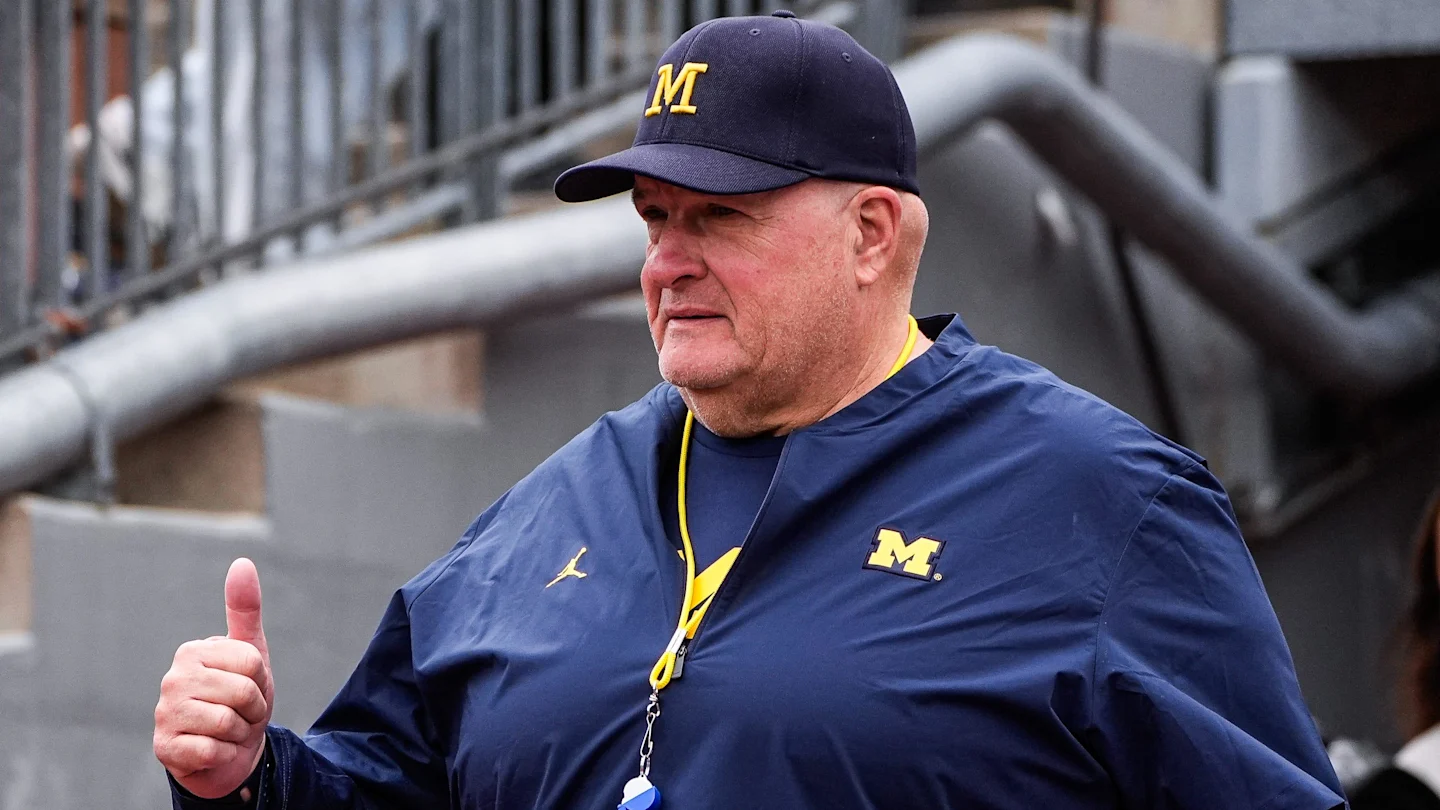
The last of the Power Four college football head coaching openings remains available at Michigan.
The Wolverines decided to part ways with head coach Sherrone Moore on Dec. 10 due to inappropriate relations with a staffer. Michigan had its sights set on Alabama head coach Kalen DeBoer, Arizona State head coach Kenny Dillingham and Washington head coach Jedd Fisch.
Though nothing was made official, Fisch was the first to bow out of the race. Alabama’s College Football Playoff victory over Oklahoma eliminated DeBoer from the conversation, and Dillingham inked an extension with Arizona State on Saturday.
With all of those candidates off the board, one who has emerged in the next round is current Wolverines interim Biff Poggi. The interim said he had been interviewed for the job on multiple occasions this offseason.
Biff Poggi says he’s had multiple interviews for Michigan’s HC position. He also has some blunt words about the program’s shortcomings under Sherrone Moore, calling Michigan a “malfunctioning organization.”
“Everything that happens in this building has to be reevaluated.”
— Austin Meek (@byAustinMeek) December 22, 2025
Poggi began his college football coaching career as an assistant with stops at Brown, Temple and the Citadel in the late 1980s. He coached at his high school alma mater, The Gilman School, as an offensive coordinator and offensive line coach from 1988 to 1995. He spent the next 20 seasons as Gilman’s head coach before returning to the college ranks.
The now 65-year-old spent two prior stints with the Wolverines under Jim Harbaugh. He worked as an analyst with the 2016 team and served as Michigan’s associate head coach in 2021 and 2022.
Poggi was hired away from Michigan to succeed Will Healy as Charlotte’s next head coach in the 2023 offseason. The 49ers were 3-9 in Poggi’s first year at the helm, tying for eleventh place in the American Athletic Conference.
After a 3-7 start to the 2024 season, Charlotte decided to part ways with Poggi. The 49ers hired Tim Albin as his replacement for 2025.
This will not be the first time Poggi has served as the Wolverines’ interim head coach. He was the interim for Michigan’s games against Central Michigan and Nebraska.
The Wolverines accepted an invitation to the Citrus Bowl at Camping World Stadium in Orlando, Florida. No. 18 Michigan (9-3, 7-2) will face No. 13 Texas (9-3, 6-2) on Dec. 31 (3 p.m. EST, ABC).

-

 Motorsports2 weeks ago
Motorsports2 weeks agoSoundGear Named Entitlement Sponsor of Spears CARS Tour Southwest Opener
-

 Rec Sports3 weeks ago
Rec Sports3 weeks agoBlack Bear Revises Recording Policies After Rulebook Language Surfaces via Lever
-

 Motorsports2 weeks ago
Motorsports2 weeks agoDonny Schatz finds new home for 2026, inks full-time deal with CJB Motorsports – InForum
-

 Rec Sports2 weeks ago
Rec Sports2 weeks agoHow Donald Trump became FIFA’s ‘soccer president’ long before World Cup draw
-

 Rec Sports2 weeks ago
Rec Sports2 weeks agoDavid Blitzer, Harris Blitzer Sports & Entertainment
-

 Motorsports2 weeks ago
Motorsports2 weeks agoJR Motorsports Confirms Death Of NASCAR Veteran Michael Annett At Age 39
-
Sports2 weeks ago
Elliot and Thuotte Highlight Men’s Indoor Track and Field Season Opener
-

 Motorsports2 weeks ago
Motorsports2 weeks agoRick Ware Racing switching to Chevrolet for 2026
-
Sports2 weeks ago
West Fargo volleyball coach Kelsey Titus resigns after four seasons – InForum
-
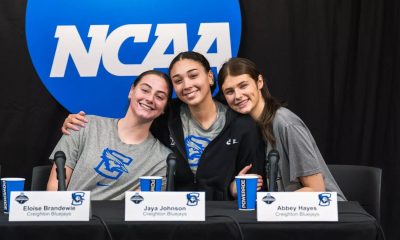
 Sports1 week ago
Sports1 week ago#11 Volleyball Practices, Then Meets Media Prior to #2 Kentucky Match


































